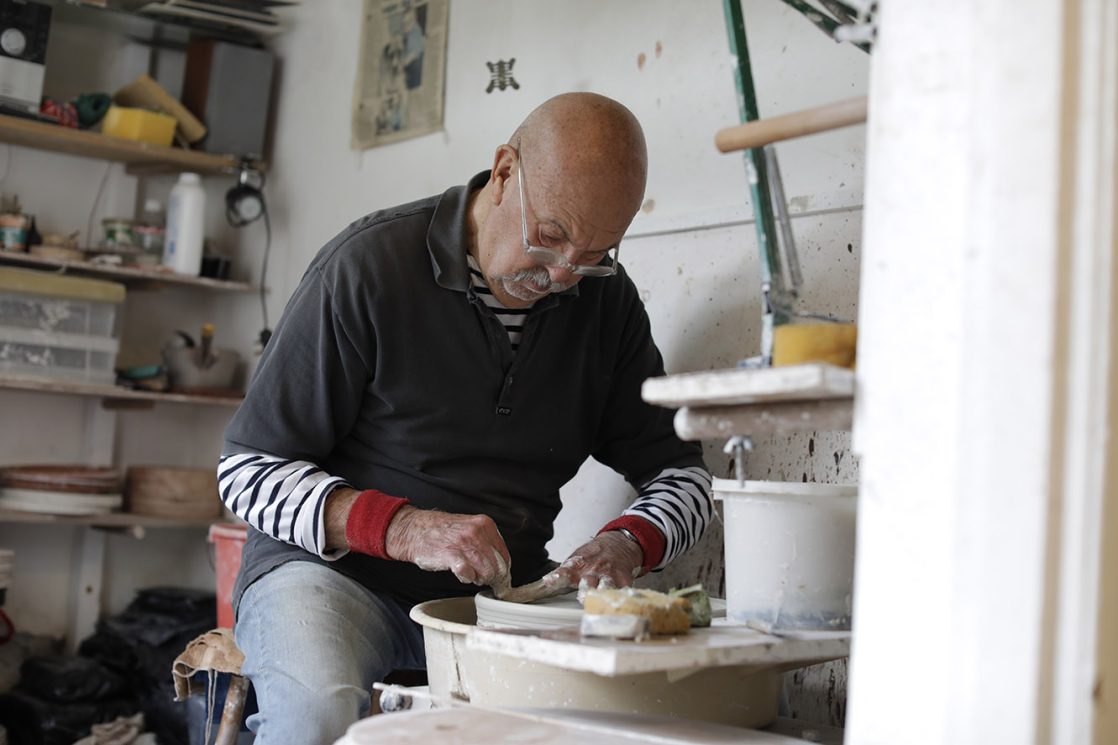Welcome to Ceramic Review
Ceramic Review is the magazine for contemporary and historical ceramics, ceramic art and pottery.
Ceramic Review Issue 326
March/April 2024
Ceramic Review is the magazine for contemporary and historical ceramics, ceramic art and pottery.
March/April 2024
The potter takes us through the processes and techniques he uses to make and decorate his painterly pieces
I got started with clay in a rather unorthodox way. I was looking for what in Buddhist terms is called ‘right livelihood’. A friend advised me to try the Sir John Cass School of Art in Whitechapel, London, so I went along. The lady in charge there asked me what I wanted, I said: ‘I would like to be a potter,’ and she replied: ‘go home and change and come back this afternoon.’ It wouldn’t work like that these days!
After 18 months at Sir John Cass, I became the technician on the Harrow Studio Pottery Course from 1968-70. I was now amongst the premiership of British potters, with the likes of Victor Margrie, Mick Casson, Wally Keeler, Mo Jupp, Colin Pearson and Bryan Newman. I later became a workshop assistant to Colin and Bryan, with Colin eventually becoming my mentor.


In 1971, I established my workshop in an old warehouse in the historical Barbican area of Plymouth. It was here that I became recognised for making traditional English slipware in the style of Thomas Toft. Podmore, now the Potters Connection, produced my slips commercially and invited me to give seminars throughout the UK and Europe.
By 1985, I felt like I had exhausted all the traditional techniques for making slipware. Inspired by an exhibition of Howard Hodgkin’s paintings, I began a new direction working with white clay and coloured slips.
I dispensed with slip trailers in favour of paintbrushes, sponges and plastic spatulas cut from yogurt pot lids for their flexibility. In 2000, I began working from home, which afforded me less distractions.
The abstract painter Hans Hofmann’s use of the push pull effect of colour manipulation is a method I constantly refer to. Depending on the background shade, one colour next to another will give the impression that one moves forward while the other recedes.


Plastic spatulas allow me to apply thick applications of slip in a more painterly way, which allows me to treat pots as canvases for the medium of colour. An eccentric painter I admire is George Rowlett, who applies his paint with a paint scraper.
My recent work references my interest in Zen philosophy, particularly the contemplation and immediacy of Zen brush strokes.
I have visited Japan twice, once for three weeks to study zazen with a Rinzai master, and the other to see the teabowls of my favourite potter, 15th-generation raku master Kichizaemon in Kyoto. Both these trips had a profound spiritual effect on me, leaving me with a love for making pots.
For more details visit johnpollex.com
All photography by Layton Thompson
